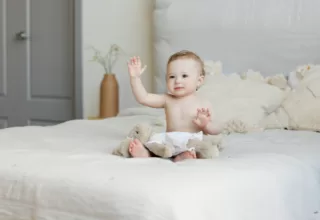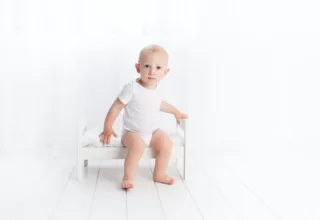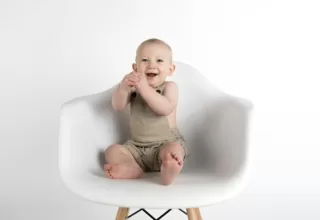Signs That Baby is Ready for Potty Training
Outline of the Article
- Introduction
- Understanding the signs of readiness
- Age-related factors
- Communication and language skills
- Motor skills and coordination
- Cognitive and emotional readiness
- Timing considerations
- Parental readiness and preparation
- FAQs
Potty training is an important milestone in a child’s development, signifying their transition from diapers to using the toilet independently. As a parent, it’s essential to recognize the signs of readiness in your baby to ensure a successful and stress-free potty training experience. In this article, we will explore the various signs that indicate your baby is ready for potty training and provide guidance on how to approach this milestone.
Introduction
Potty training is a significant step in your child’s journey towards independence and self-care. It is a process that involves teaching your baby to recognize their body’s cues, control their bladder and bowel movements, and use the potty or toilet effectively. By understanding the signs of readiness, you can introduce potty training at the right time, setting the stage for a smoother transition.
Understanding the Signs of Readiness
Before embarking on the potty training journey, it’s crucial to observe your baby for signs of readiness. These signs can be categorized into physical and behavioural indicators, providing insights into your baby’s readiness to start potty training.
Physical Signs
Physical signs of readiness include:
- Controlled bladder and bowel movements: Your baby may exhibit longer periods of dryness between diaper changes, indicating that their bladder muscles are developing.
- Regular bowel movements: Your baby’s bowel movements may become more predictable and occur around the same time each day.
- Awareness of bodily functions: Your baby may show signs of discomfort or alertness when they are urinating or having a bowel movement, indicating an awareness of these bodily functions.
Behavioral Signs
Behavioral signs of readiness include:
- Showing interest in the potty or toilet: Your baby may display curiosity about the bathroom, toilets, or potty chairs. They may imitate family members or ask questions about toileting.
- Ability to communicate: Your baby may have the ability to communicate their needs or indicate when they need a diaper change. They may use words, gestures, or specific behaviors to convey their toileting needs.
- Desire for independence: Your baby may exhibit a growing desire for independence and a willingness to imitate older siblings or peers who use the toilet.
- Expressing discomfort with dirty diapers: Your baby may display signs of discomfort or displeasure when their diaper is wet or soiled, showing a preference for cleanliness.
Age-Related Factors
While there is no fixed age for potty training, age can play a role in determining readiness. Most children show signs of readiness between 18 months and 3 years of age. However, it’s important to note that every child develops at their own pace, and readiness can vary.
Ideal Age for Potty Training
Around the age of 2 years is a common time to begin potty training. At this stage, many children have developed the necessary physical, cognitive, and behavioural skills to start the process. However, some children may show readiness signs earlier or later.
Variations in Readiness Based on Age
The signs of readiness can differ based on your baby’s age. Younger babies may exhibit physical signs such as longer dry periods between diaper changes or regular bowel movements. Older babies may demonstrate behavioural signs like showing interest in the potty or expressing a desire for independence.
Communication and Language Skills
Effective communication and language skills play a vital role in successful potty training. Your baby should have developed the ability to understand and express their toileting needs to facilitate the process.
Development of Verbal Cues
As your baby grows, their language skills develop. They may start using words or simple phrases related to toileting, such as “pee,” “poo,” or “potty.” Understanding these verbal cues allows you to recognize their communication about their toileting needs.
Recognizing Your Baby’s Attempts to Communicate
Apart from verbal cues, your baby may also use non-verbal signals to communicate their needs. They may tug at their diaper, make specific gestures, or adopt certain postures to indicate that they need to use the potty. Being attentive to these cues can help you respond promptly and encourage their communication efforts.
Motor Skills and Coordination
The development of motor skills and coordination is essential for successful potty training. Your baby needs to achieve certain milestones to perform the necessary actions involved in using the potty or toilet.
Achieving Sitting and Standing Independently
To use the potty or toilet, your baby should have the physical ability to sit comfortably and maintain balance without assistance. They should also be able to stand up independently after using the toilet. These skills ensure safety and facilitate a smooth toileting experience.
Ability to Remove Clothing
Potty training involves removing clothing before using the toilet and then dressing themselves afterward. Your baby should demonstrate the ability to pull down and pull up their pants or underwear with minimal assistance. This skill promotes independence and reduces reliance on caregivers during toileting.
Cognitive and Emotional Readiness
In addition to physical and motor skills, cognitive and emotional readiness are important aspects of successful potty training. Your baby should display certain cognitive and emotional abilities that contribute to their understanding of the process.
Awareness of Bodily Functions
A key sign of readiness is your baby’s awareness of their bodily functions, including urination and bowel movements. They may demonstrate understanding by associating specific sensations with the need to use the potty, such as indicating when they are wet or soiled.
Displaying Interest in the Potty or Toilet
An eager interest in the potty or toilet is an encouraging sign of readiness. Your baby may show curiosity about the bathroom environment, toilets, or potty chairs. They may observe and imitate older siblings, family members, or peers who use the toilet. This curiosity and fascination indicate a readiness to explore the potty training process.
Timing Considerations
Timing is crucial when it comes to introducing potty training. Recognizing the right time to start can contribute to a more successful and less stressful experience for both you and your baby.
Recognizing the Right Time to Start
While signs of readiness are essential, it’s also important to consider other factors that may influence the timing of potty training. Avoid initiating potty training during major life changes such as moving to a new house, the arrival of a new sibling, or a significant transition period. Stability and a calm environment can enhance the effectiveness of potty training.
Avoiding Potty Training During Major Life Changes
Major life changes can disrupt your baby’s routine and increase their stress levels. Potty training requires patience, consistency, and a supportive environment. By avoiding potty training during times of significant change, you can ensure that your baby’s focus remains on the learning process rather than adjusting to new circumstances.
Parental Readiness and Preparation
Potty training is a team effort that requires parental commitment, preparation, and patience. Before embarking on this journey, it’s essential for parents to assess their own readiness and ensure they are equipped with the necessary knowledge and resources.
Understanding Parental Commitment
Potty training demands time, energy, and consistency from parents or caregivers. It’s crucial to evaluate your readiness to commit to the process and provide the necessary support to your baby. Being prepared for accidents, setbacks, and the overall learning curve is essential to maintain a positive and encouraging atmosphere.
Gathering Necessary Supplies
To facilitate potty training, gather the essential supplies beforehand. These may include a potty chair or a child-sized toilet seat, step stool, comfortable underwear or training pants, wipes, and extra clothing. Having these supplies readily available ensures a smooth transition from diapers to using the toilet.
FAQs
Q1. What if my baby is showing some readiness signs but still seems hesitant to use the potty? It’s common for babies to feel hesitant or anxious during the initial stages of potty training. Be patient and provide reassurance. Create a comfortable and supportive environment, and encourage them without pressuring. Gradually introduce the potty and allow them to take their time to adjust.
Q2. Should I switch directly from diapers to underwear during potty training? The transition from diapers to underwear can be gradual. Begin by allowing your baby to spend short periods of time in underwear while closely monitoring for accidents. As they gain more confidence and demonstrate consistent success, you can increase the duration of underwear use.
Q3. What if my baby refuses to sit on the potty or toilet? Resistance is common during potty training. Respect their feelings and avoid forcing them to sit on the potty. Make it a positive and engaging experience by incorporating their favorite toys, books, or songs. Offer incentives or rewards to encourage participation.
Q4. How long does potty training usually take? The duration of potty training can vary for each child. Some may grasp the concept quickly, while others may take more time. On average, it can take several weeks to a few months for a child to become fully independent in using the potty. Remember to be patient and understanding throughout the process, as every child learns at their own pace.
Q5. What if my baby has accidents after being successfully potty trained? Accidents can happen even after a child has been successfully potty trained. It’s important to remain calm and supportive. Review the routine and ensure your child is given regular opportunities to use the potty. Accidents may occur due to various reasons, such as being engrossed in play or not recognizing the need to go in time. Continue to reinforce the importance of using the potty and provide gentle reminders.
Q6. Should I use training pants or regular underwear during potty training? The choice between training pants and regular underwear depends on your child’s individual needs and preferences. Training pants offer some absorbency, making them useful during the early stages of potty training when accidents are more frequent. However, transitioning to regular underwear can help your child associate the discomfort of wetness with using the toilet.
How useful was this post?
Click on a star to rate it!
Average rating 5 / 5. Vote count: 1
No votes so far! Be the first to rate this post.



